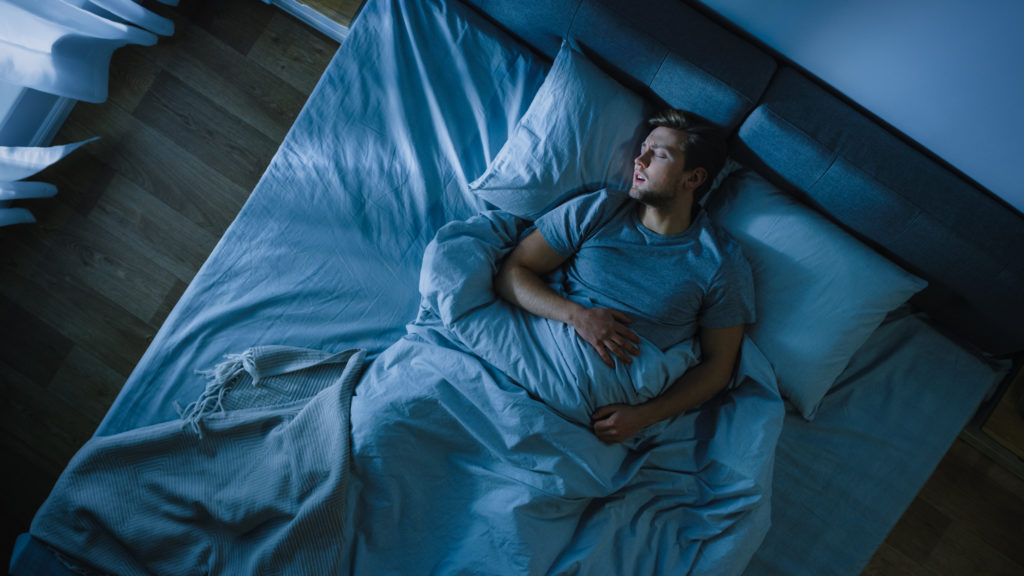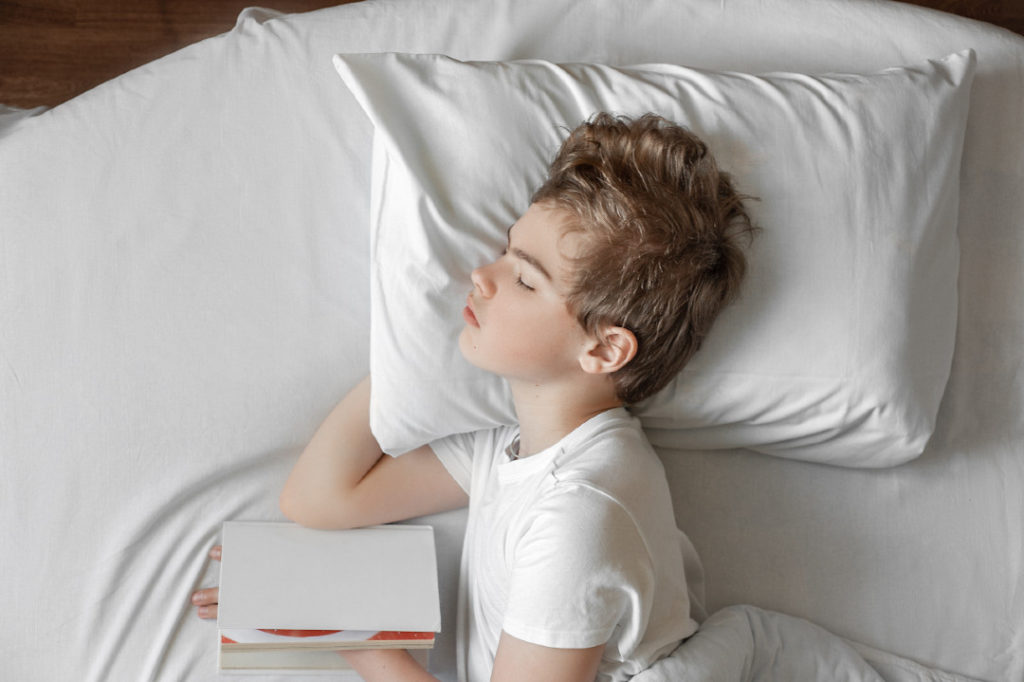If you’ve ever experienced a sleep paralytic episode, you know just how uncomfortable this condition can get. These traumatic episodes include elements of both slumber and wakefulness, which is part of why they often give rise to disturbing symptoms. While much is still unknown about the condition, a review of its symptoms, causes, impacts, and treatment can help better understand the condition and how to treat it.
What is Sleep Paralysis?

Sleep paralysis is classified as a kind of REM parasomnia. Parasomnias are irregular sleeping behaviors. Sleep paralysis is a brief inability to speak or move while falling asleep or when waking up. It is very common for people to have frightening hallucinations during episodes of sleep paralysis.
Regular REM sleep includes lucid dreaming as well as atonia, which is responsible for preventing you from acting out your dreams. However, under normal circumstances, atonia ceases when you wake up, so a person is never conscious while this inability to move is in effect. To put it simply, sleep paralysis involves a mixed state of consciousness that mingles both REM sleep and wakefulness.
Types of Sleep Paralysis
Sleep paralysis can be categorized into two terms:
- Isolated sleep paralysis occurs when the episodes aren’t linked to an underlying diagnosis of narcolepsy, the neurological disorder that hinders the brain from controlling wakefulness properly.
- Recurrent sleep paralysis involves recurrent episodes over time.
What Sleep Paralysis Feels Like
The primary manifestation of sleep paralysis is atonia (the inability to move the body), which occurs shortly after falling asleep or waking up. During this temporary episode, you are somewhat awake and conscious of this loss of movement.
Hallucinations during a paralytic episode fall into three sections:
- Chest pressure hallucinations (incubus hallucinations) can invoke an uncomfortable feeling of suffocation. These often occur along with intruder hallucinations.
- Intruder hallucinations involve the perception of vulnerability against a dangerous presence in the room.
- Vestibular-motor (V-M) hallucinations often include out-of-body sensations or feelings of movement (flying).
Atonia is already uncomfortable as it is, and terrifying hallucinations can make episodes even more disturbing. As a result, around 90% of paralytic episodes are associated with terror and panic. However, in rare cases, people have reported more pleasant or even joyful hallucinations.
These episodes can last anywhere from a few seconds to almost 20 minutes. In many cases, these traumatic episodes stop on their own but can also be stopped by a person’s voice or touch or by an extreme effort to overcome atonia.
Is Sleep Paralysis Common?
Estimations fluctuate, but experts believe that almost 10% of people experience sleep paralysis at some point in their life. Sleep paralysis can manifest itself at any age, but initial symptoms often show up in early childhood, adolescence, or young adulthood (ages 8 to 25). If the symptoms start in the teenage years, episodes may occur more often in the 20s and 30s.
What Causes Sleep Paralysis?

The exact cause of sleep paralysis remains undiscovered. Researchers have analyzed and are still gathering data to find out what is linked to a higher risk of sleep paralysis – and so far, the results are mixed. Based on that limited yet promising research, experts believe that various factors are implicated in inducing sleep paralysis.
Sleep conditions have proven to have some of the most substantial relationships with isolated sleep paralysis. More serious incidences of sleep paralysis — 38% in one study — are reported by individuals with obstructive sleep apnea (OSA), a sleep condition that involves repeated failures in breathing. Furthermore, sleep paralysis also is more prevalent in individuals with nighttime leg cramps.
That’s not all of it. Having a difficult time falling asleep, and excessive daytime sleepiness is also linked to sleep paralysis. Also, people whose circadian rhythms are not synched with their natural day-night cycles, such as people undergoing jet lag and late-night shift workers, may be at higher risk of experiencing sleep paralysis.
Mental disorders also play a role. Some mental health conditions have revealed an association with sleep paralysis. People suffering from anxiety disorders appear to be more prone to experience the condition. Some of the strongest connections are in people who suffer from post-traumatic stress disorder (PTSD) and others who have had been subjected to childhood sexual assault or other types of physical and emotional suffering. Studies show that there is a higher risk in individuals with a long family history of paralytic episodes.
Furthermore, researchers have found that people who show characteristics of imaginativeness and are disassociated from their immediate sphere are more likely to experience sleep paralysis.
More research is still needed to further examine these correlations and better grasp the various potential causes of sleep paralysis.
How Serious Is Sleep Paralysis?
In most cases, sleep paralysis is not a deadly problem. It is classified as a mild condition and does not happen often enough to induce significant health damages. However, an approximated 10% of individuals experience recurrent or disturbing episodes that make sleep paralysis especially uncomfortable.
As a consequence, they may have negative thoughts about sleeping, decreasing the time allotted for sleep. That being said, sleep paralysis is not a severe problem. Still, the sleep deprivation associated with it can lead to extreme sleepiness and many other consequences that can affect a person’s overall health.
Can Sleep Paralysis Be Treated?
Overall, there is no universal treatment for sleep paralysis. The first step in managing and hopefully treating sleep paralysis is to discuss the situation with a doctor to recognize and address any underlying concerns that may be contributing to the recurrence or intensity of the episodes. For instance, treatment for narcolepsy or measures to properly manage sleep apnea could help.
Besides discussing the situation with a doctor, there are some steps you can take to prevent it from happening. Because of the association between sleep paralysis and general sleeping conditions, improving sleep hygiene can go a long way.
Here are some healthy sleep tips that can help improve sleep hygiene and help you get more consistent nightly rest:
- Sticking to the same schedule when going to bed and waking up every day (including on weekends)
- Setting a pre-bed routine that helps you get comfy and relaxed
- Supplying your bed with a comfortable mattress and pillow
- Setting up your bedroom to have restricted intrusion from light or sound
- Decreasing the consumption of caffeine and alcohol, especially before bedtime
- Avoiding electronic devices (including cell phones) before bed
Takeaway
Sleep paralysis can feel like a distressing, life-ending condition. It’s like being caught in the devil’s restraints, where your mind is conscious, but your body is still asleep. You find yourself in a nightmare with powerful hallucinations, and there’s no way out.
Sleep paralysis is not the end of the line. While there is no official treatment for it, there are ways to manage it. Find out what influences your sleep patterns, learn how to improve your sleep hygiene, and talk to a doctor about it.



11 Replies to “Figuring Out What Sleep Paralysis Is”